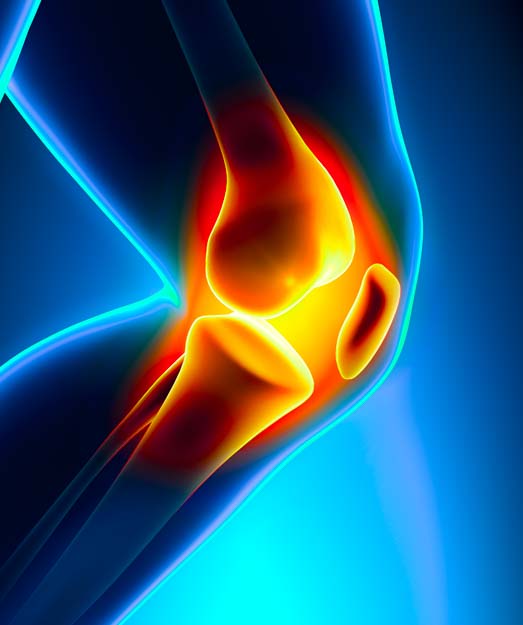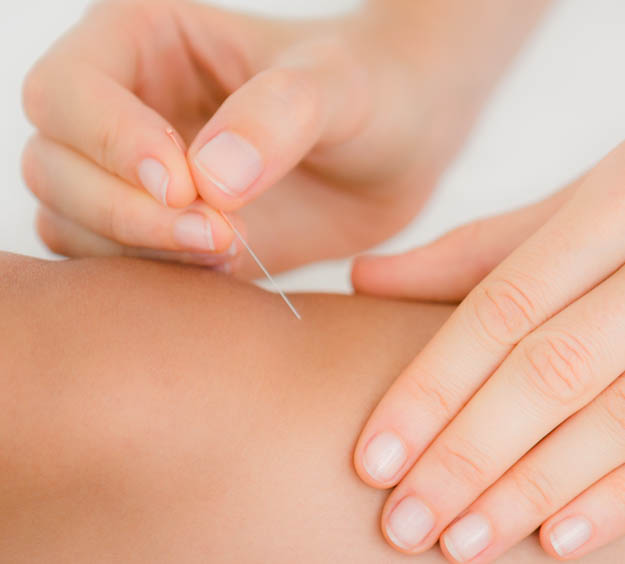Acupuncture with moxibustion is more effective than drugs for the alleviation of knee pain. Research published in the Anhui Medical and Pharmaceutical Journal demonstrates that acupuncture combined with moxibustion outperforms nonsteroidal anti-inflammatory medications (NSAIDs) for the treatment of knee osteoarthritis. NSAIDs provided a faster onset of initial effective therapeutic actions. However, acupuncture provided superior long-term relief from pain and improvements in range of motion. 
Two study groups were compared. Group one received acupuncture plus moxibustion at a rate of once per day, five times per week, for a total of four weeks. Group two received the NSAID diclofenac in 75 mg time-release enteric coated capsules, once per day, for twenty days. The NSAID group had a 33.33% total effective rate. The acupuncture plus moxibustion group had a 63.33% total effective rate.
The primary acupuncture point prescription included the following acupoints:
- Xiyan, (M-NLE-16)
- Heding, (M-LE-27)
A secondary set of acupuncture points was added dependent upon differential diagnostics in the Traditional Chinese Medicine (TCM) system. For stomach yangming channel related knee osteoarthritis, the following acupoints were added:
- Liangqiu, ST34
- Zusanli, ST36
- Futu, ST32
For gallbladder shaoyang related disorders, the following were added:
- Yanglinquan, GB34
- Xiyangguan, GB33
- Waiqiu, GB36
- Juegu, GB39
For bladder taiyang related disorders, the following acupoints were added:
- Weizhong, BL40
- Weiyang, BL39
- Chengshan, BL57
- Kunlun, BL60
For spleen taiyin related disorders, the following acupuncture points were added:
- Xuehai, SP10
- Yinlingquan, SP9
- Taibai, SP3
For liver jueyin related conditions, the following acupoints were included:
- Xiguan, LV7
- Taichong, LV3
- Yinbao, LV9
For wind-cold channel blockages, the following acupoints were added:
- Quchi, LI11
- Dazhui, DU14
- Fengchi, GB20
For blood stasis, the following were added:
- Taichong, LV3
- Geshu, BL17
- Xuehai, SP10
For liver and kidney related conditions, the following acupoints were added:
- Ganshu, BL18
- Shenshu, BL23
- Qihai, CV6
Rapid needle insertion was performed. Twisting, lifting, and thrusting manual acupuncture techniques were applied to elicit deqi. After the arrival of deqi, the needle retention time was thirty minutes.
Drugs achieved the most rapid relief from pain. Acupuncture plus moxibustion achieved the highest total effective rate for pain relief and range of motion improvements. NSAIDs were 33.33% effective and acupuncture plus moxibustion was 63.33% effective. 
Zhou et al. (2014) had similar findings. . Patients receiving electroacupuncture had a 60% total effective rate and patients receiving manual acupuncture with moxibustion had a 48.89% total effective rate for the treatment of knee osteoarthritis. The primary acupuncture point selection was different and included the following acupoints:
- SP10
- Xiyan
- ST36
- SP9
- BL23
Sanyinjiao (SP6) was added for patients with continuous pain and Weizhong (BL40) was added for patients with severe pain intensity levels. Although using different clinical protocols, both research teams demonstrated that acupuncture is an effective modality for the treatment of knee osteoarthritis.
Li et al. (2011) find acupuncture effective for the treatment of osteoarthritis. They concluded that electroacupuncture “inhibits osteoarthritis-induced pain by enhancing 5-HT2A/2C [serotonin] receptor activity.” The research team consisted of researchers from the University of Maryland (Baltimore) and Shanxi Medical University. The team made important findings noting that electroacupuncture activates serotonergic neurons and attenuates osteoarthritis pain by activating serotonin receptors that “play an important role in pain modulation at the spinal level.”
References:
Sun K, Huang XY & Wei FL. (2015). Clinical study on the treatment of knee osteoarthritis by acupuncture of Wei’s acupoints. Anhui Medical and Pharmaceutical Journal. 19(8).
Chen B, Fang ZC & Xiong FL. (2011). Acupuncture in treating knee osteoarthritis and improving the patients’ quality of life. Journal of Guiyang College. 33(3): 7-9.
Zhou WC. (2014). Clinical Comparative Study of Electro-acupuncture and Warm Acupuncture on Kidney Marrow Deficiency Syndrome of Knee Osteoarthritis. Journal of Emergency in Traditional Chinese Medicine. 23(8).
Serotonin Receptor 2A/C Is Involved in Electroacupuncture Inhibition of Pain in an Osteoarthritis Rat Model. Aihui Li, Yu Zhang, Lixing Lao, Jiajia Xin, Ke Ren, Brian M. Berman, and Rui-Xin Zhang. Hindawi Publishing Corporation. Evidence-Based Complementary and Alternative Medicine Volume 2011, Article ID 619650, 6 pages.


